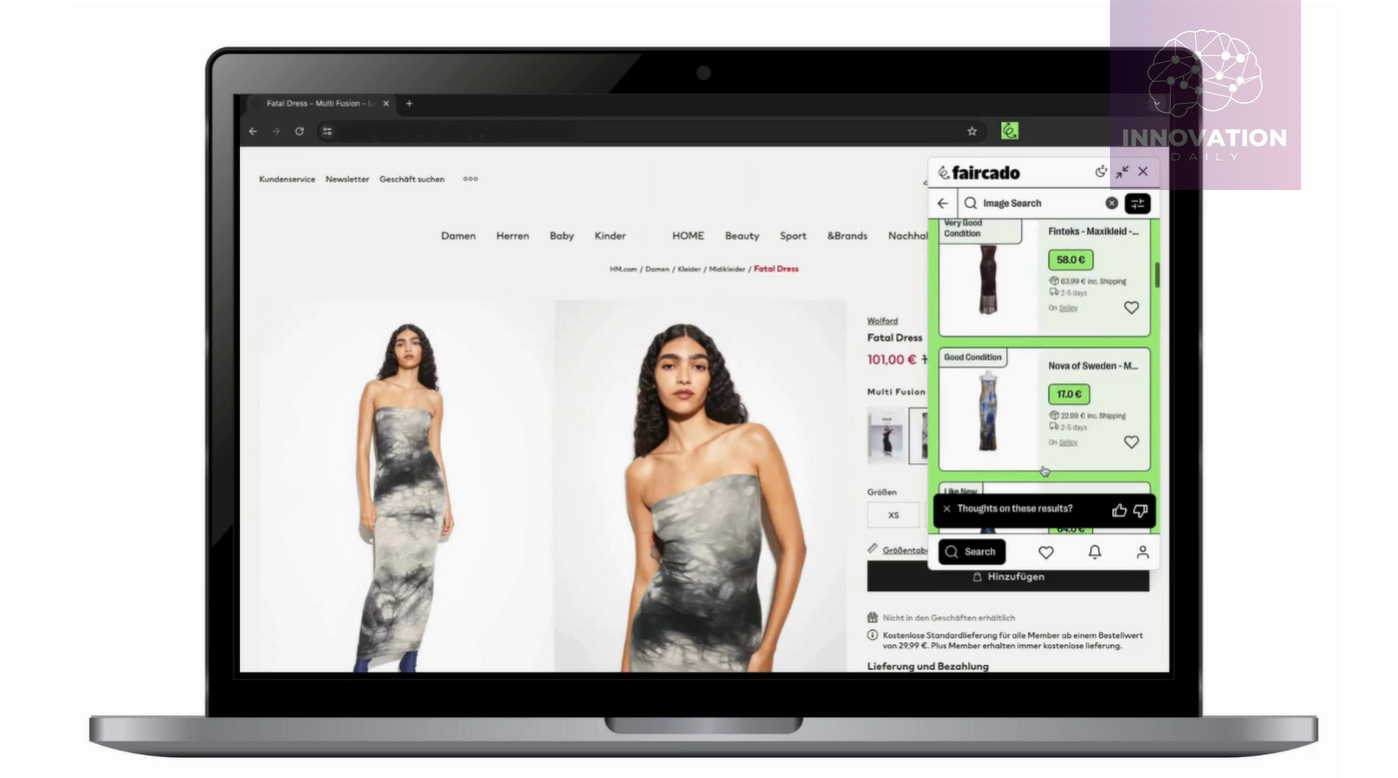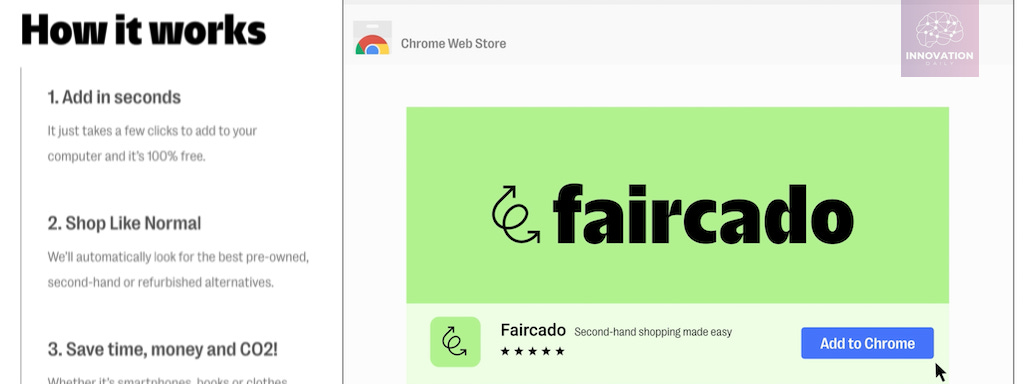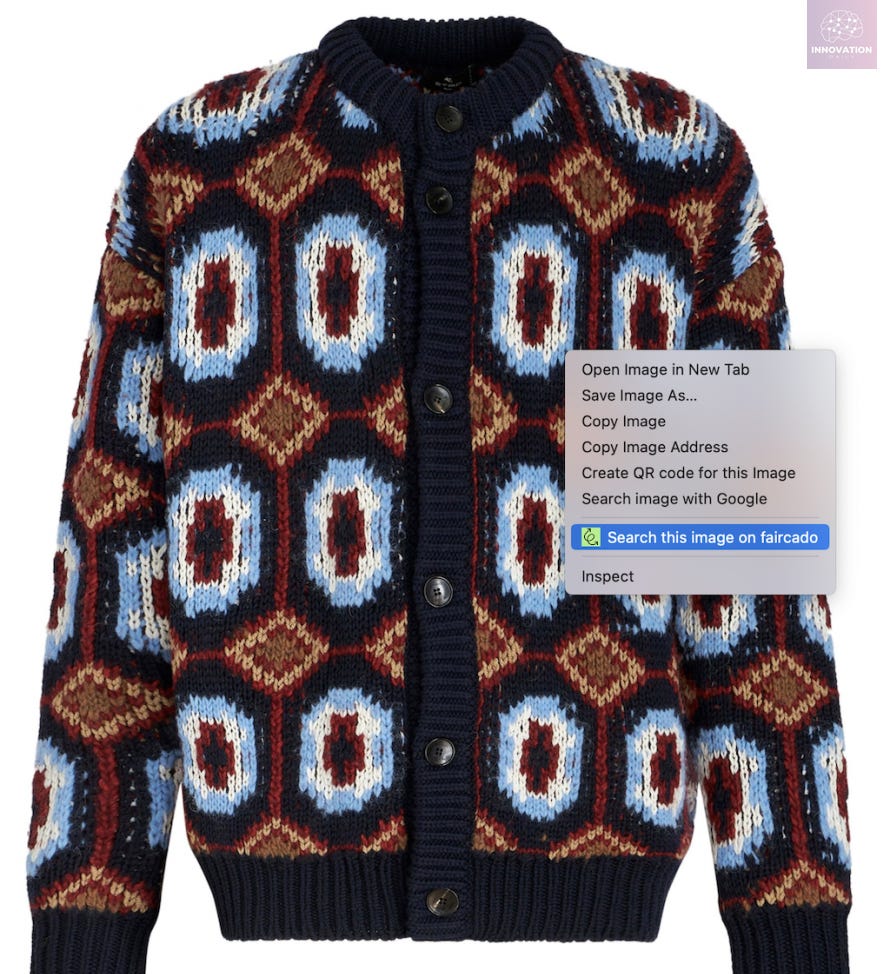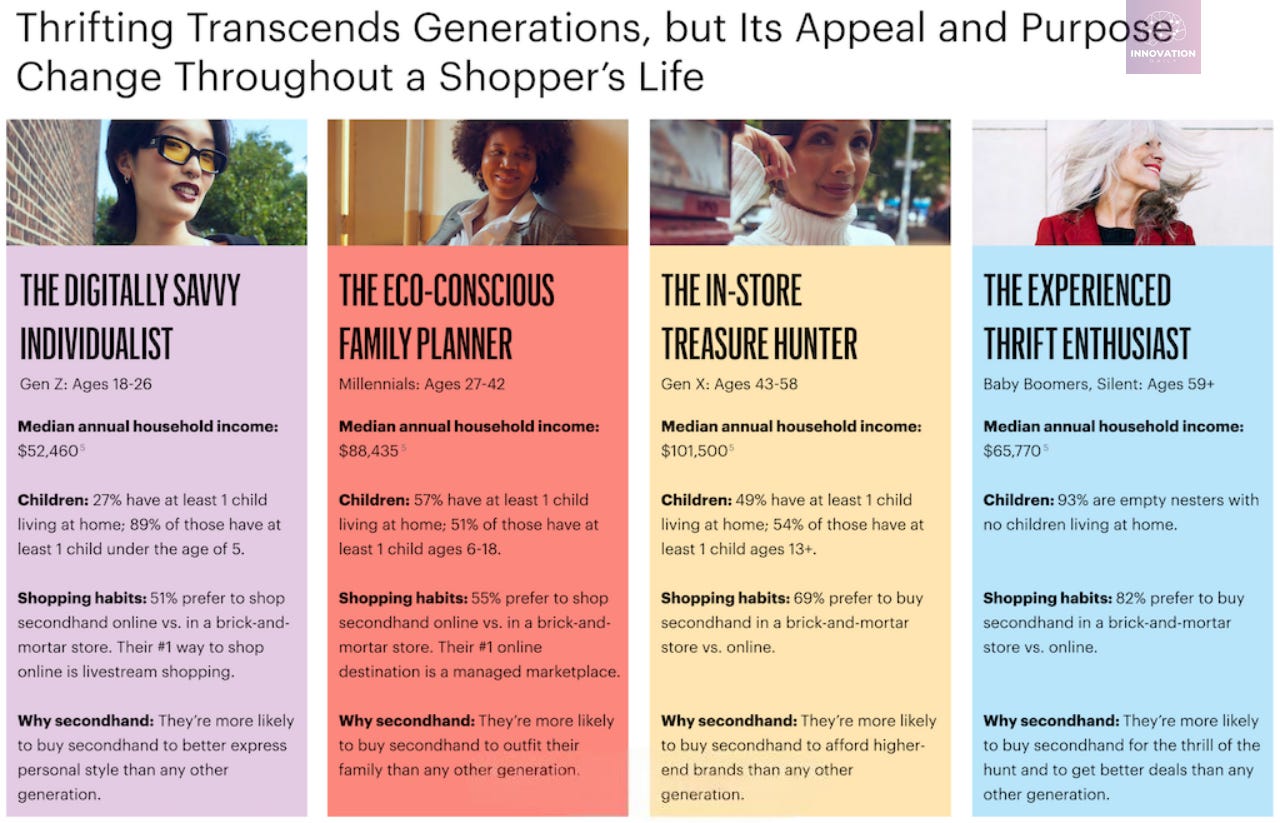Beyond the Cart
Today’s featured startup is weaving secondhand shopping into your everyday browsing.
Project Overview
Faircado is building a smarter way to buy secondhand — without changing your shopping habits.
Instead of asking users to browse a separate site or download yet another app, Faircado integrates directly into the way people already shop. All you need to do is install their browser extension. Then just shop as usual on sites like Amazon.
While you're browsing, Faircado quietly works in the background. It detects what product you're looking at — and instantly suggests secondhand alternatives in a small pop-up window.
If the AI can't automatically identify the item, you can click the product image and ask Faircado to search for that exact item.
Behind the scenes, Faircado’s proprietary AI powers both product recognition and image search. It can parse pages from 1,600 online stores and match against a database of 50 million secondhand listings.
These listings come from partner platforms — including eBay — who pay Faircado for traffic and take a cut from purchases made through the extension. The startup already has more than 50 such partners on board.
Faircado’s extension is still in beta with a few thousand users. But the startup recently raised an additional €2.3M in funding, on top of the €750K they had secured earlier to build the platform.
What’s the Gist?
Faircado isn’t the first to tackle secondhand search.
Why? Because the secondhand market is booming.
By 2028, the global secondhand market is expected to hit $350B. Sales of used clothing alone are growing three times faster than the overall fashion industry.
According to ThredUp, 52% of buyers purchased secondhand clothing in 2023. Among Gen Z, that number jumps to 65%. Two in five items sold in the past year were secondhand — accounting for nearly half of all clothing spend.
Different generations have different motivations:
Gen Z (18–26): Want to express individuality and access rare brands without breaking the bank.
Millennials (27–42): Shop secondhand to dress the whole family affordably.
Gen X (43–58): Prefer premium brands — but buy them used to avoid overpaying.
Boomers (59+): Enjoy the hunt for great deals and unique finds.
Faircado’s biggest strength is how seamlessly it fits into existing behavior. Instead of teaching users new habits, it works with the ones they already have — a rare and powerful approach in consumer tech.
Compare this with Haz, another startup in the space, which encourages users to digitize their wardrobes and resell items socially.
The secondhand gold rush is on. But every startup is taking a different path.
Key Takeaways
The secondhand economy is growing fast. But building a business in this space doesn’t mean opening a thrift store — it means building platforms that help others buy and sell more easily.
At its core, the market is one giant marketplace. For demand to grow, supply must come first. And supply means people willing to list what they own.
There are two main strategies for solving this:
Search-first: Aggregate listings from across the web — like Faircado and Gently — and make discovery as smooth as possible.
Sell-first: Focus on helping people list and sell their own items — like Haz (wardrobe management).
The question is: Which side of the marketplace will you start from?
Company Info
Faircado
Website: faircado.com
Last Round: €2.3M, 28.05.2024
Total Investment: €3.05M, across 2 rounds










